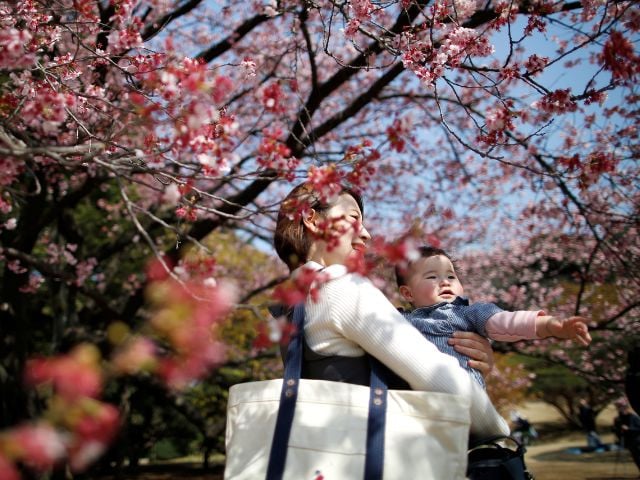Japan’s population declined by 550,000 in 2024, marking the 14th consecutive annual drop and underscoring the country’s deepening demographic crisis.
According to data released Monday by the Ministry of Internal Affairs and Communications, the total population stood at 123.8 million as of October 2024. The number of Japanese nationals fell by a record 898,000 to 120.3 million, the largest drop since records began in 1950.
The sharp contraction highlights the mounting pressures Japan faces in sustaining its workforce, funding social security programs, and reversing an ongoing birth rate collapse. The core working-age population—aged 15 to 64—declined by 224,000 to 73.7 million.
Japan’s child population also fell significantly, with a decline of 343,000 to 13.8 million, or just 11.2% of the total population—a record low. The trend follows earlier government data showing births dropped to historic lows in 2024.
Chief Cabinet Secretary Yoshimasa Hayashi acknowledged the urgency of the situation in a briefing Monday, saying, “The declining birthrate is continuing because many people who wish to raise children are not able to fulfill their wishes.”
Hayashi said the government would continue efforts to raise wages, reduce childcare burdens, and offer economic incentives for young families. “We will promote comprehensive measures to realize a society where everyone who wishes to have children can have children and raise them with peace of mind,” he added.
Despite limited immigration, the number of foreign residents in Japan rose for the third straight year, increasing by 342,000. However, this influx was not enough to offset the overall population decline.
Japan’s population peaked in 2008 and has been in steady decline since. While Tokyo and Saitama were the only prefectures to record population growth, 45 others—including Akita, which posted the steepest drop—saw year-on-year losses.
Japan has the lowest unemployment rate among OECD countries at 2.4%, but the shrinking labor force is expected to lead to a shortfall of 11 million workers by 2040, according to Recruit Works Institute.
The government has committed ¥3.5 trillion (about $25 billion) annually to support families through childcare and parenting subsidies, but analysts say more systemic reforms are needed to reverse the trend.
Japan’s population crisis mirrors broader challenges across developed economies, including South Korea, France, and China—all facing falling birth rates and ageing populations.







